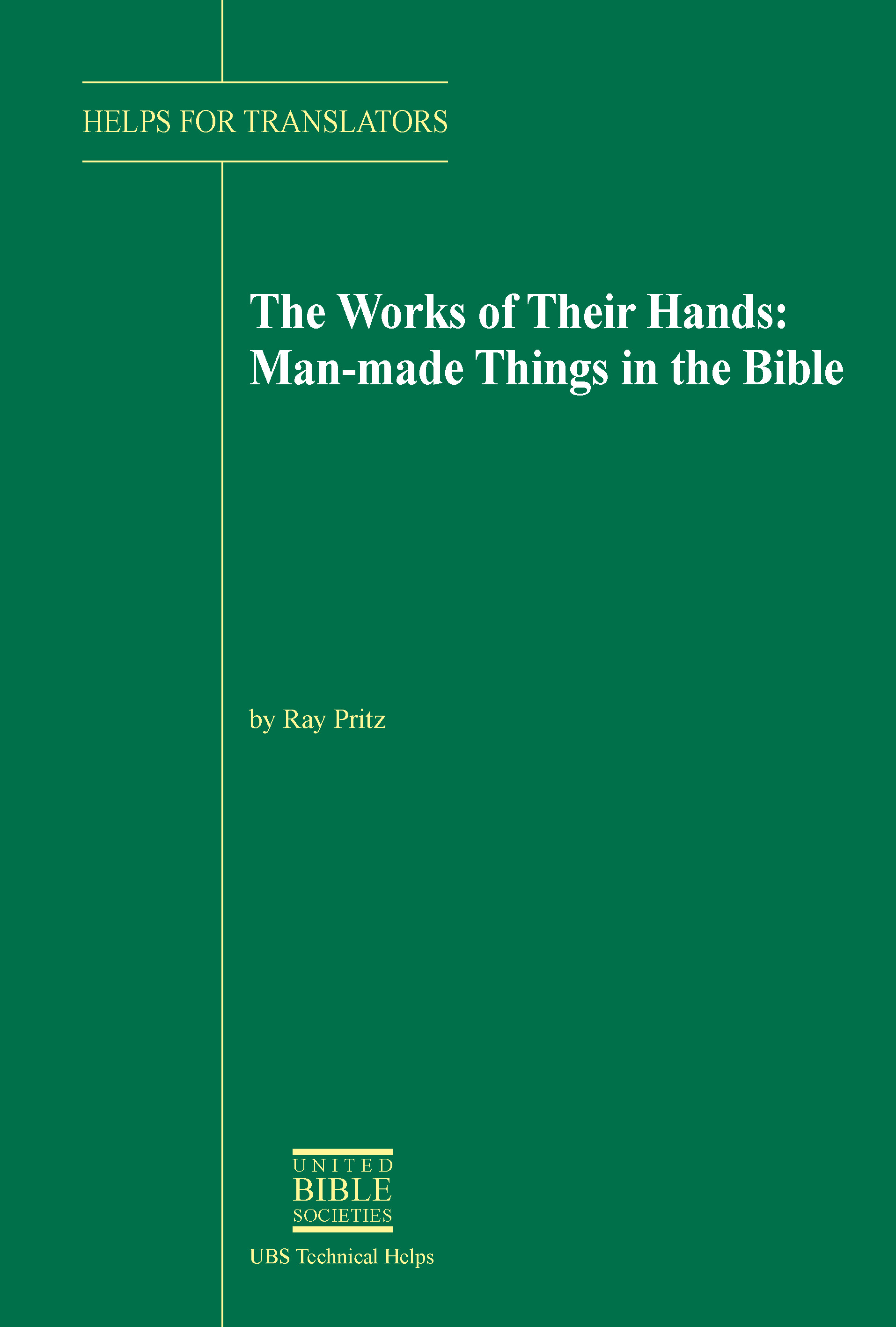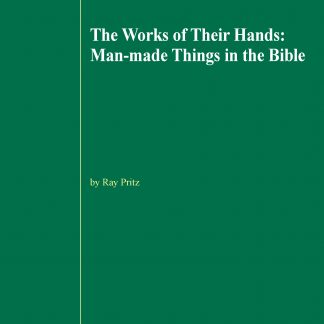Description
It was not long after people were created that they began to manufacture objects to make life easier and more enjoyable. Adam is barely out of the garden of Eden when we read that Jubal was “the ancestor of all musicians who play the harp and the flute,” and that Tubal Cain “made all kinds of tools out of bronze and iron” (Gen 4.21, 22). The Bible mentions at least five hundred distinct objects manufactured by humans, and these can present a special challenge to the translator. While there is much that is common to all human experience, and basic material needs remain fairly constant, a number of factors can make it difficult to find the proper equivalent when translating a word for a particular material object.
The end result is that one present-day culture may not have a word for an object that was common in the lands of the Bible three thousand years ago, while another culture may have ten words for varieties of the same object. The Realia Handbook explains man-made objects in the Bible, by classifying them in ten general categories. This has the advantage of placing in close proximity the discussions of objects that were found in similar settings and that were related to each other in usage. This volume, like others in the UBS Helps for Translators, concentrates on exegetical information for translators, attempting to indicate possible solutions for translational problems related to language or culture. However, many church leaders and interested Bible readers have found the UBS Helps for Translators useful and informative, and this volume will be no exception.
- Covering more than 500 distinct man-made objects.
- Hundreds of full colour illustrations.
- Unique reference tool for translators, church leaders and students.

Wineskin, water bag [An Article from the Handbook:]
References
’ov Job 32.19
chemeth Gen 21.14-15, 19; Hab 2.15
no’d Josh 9.4, 13; Jdg 4.19; 1 Sam 16.20; Psa 56.8 (9); 119.83
nevel 1 Sam 1.24; 10.3; 25.18; 2 Sam 16.1; Job 38.37; Jer 13.12; 48.12
askoputinē Jdt 10.5
askos Matt 9.17; Mark 2.22; Luke 5.37-38
Description
The wineskin or water bag was a bag made of skin or leather. Normally the skin of a goat or a sheep was used, although the skin of an ox or a camel was also possible. The skin was removed from the animal by separating it at the neck and then pulling it back whole over the body, and the skin was tanned and the hair usually removed. The skin was then turned inside out and four of the five openings (neck and four legs) were tied shut.
Usage
The bag was used to contain liquids, primarily wine or water. The skin was only a temporary storage vessel since the leather tended to spoil the taste of the liquid. Translation The Hebrew word ’ov occurs only in Job 32.19 with the meaning “wineskin,” which is made clear in the context. See the discussion on this verse in A Handbook on The Book of Job, pages 601-602. Psa 56.8; Hab 2.15: Some authorities do not see references to wineskins in these passages. See the discussions on these verses in A Handbook on Psalms (pages505-506) and A Handbook on The Books of Nahum, Habakkuk, and Zephaniah (pages 105-106). Psa 119.83: For the first line of this verse, GNT has “I am as useless as a discarded wineskin.” In many languages this rendering will have little or no meaning.
So the translator has two choices: either to say “I am of no account,” or to use a local object instead of “wineskin,” such as a mildewed bag. Matt 9.17; Mark 2.22; Luke 5.37-38: These parallel passages in the New Testament refer to “wineskins.” A number of translators have attempted to substitute “bottles” for “wineskins,” but this has not been satisfactory, since fermenting wine does not normally break glass or earthen bottles, while it would break old wineskins. In circumstances in which the use of wineskins is not known, it may be necessary to employ some kind of descriptive phrase (for example, “container made of skin,” “closed bag of skin,” or “goat skin like a bottle”) and a fuller explanation in a footnote.
Published 2009 Pages 516 [Colour]






